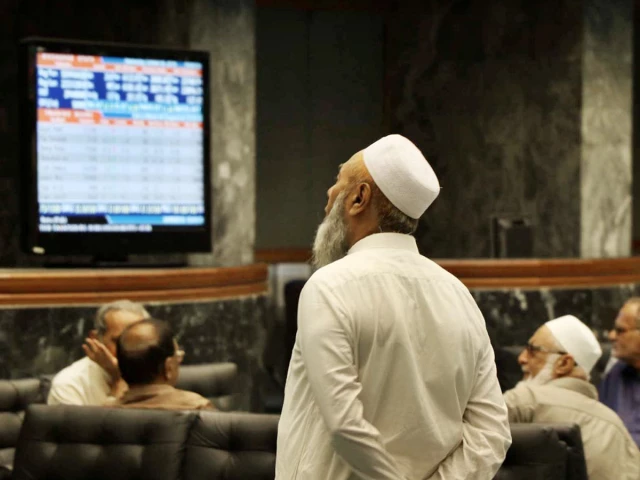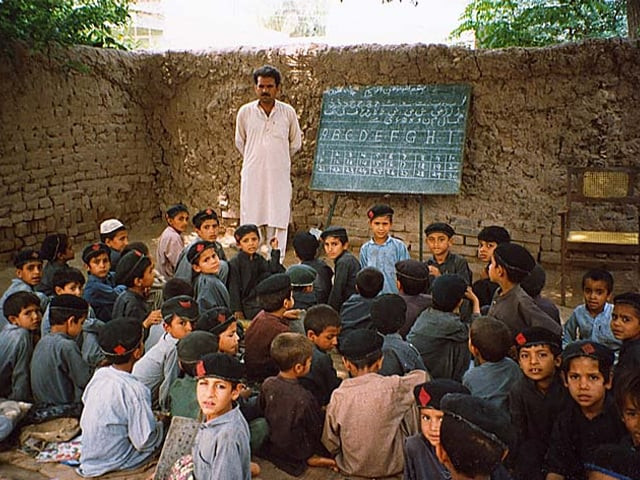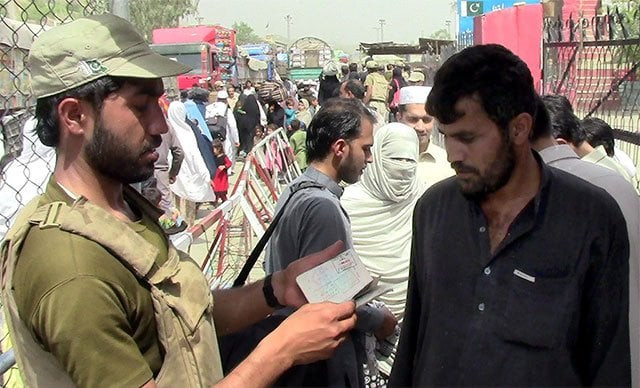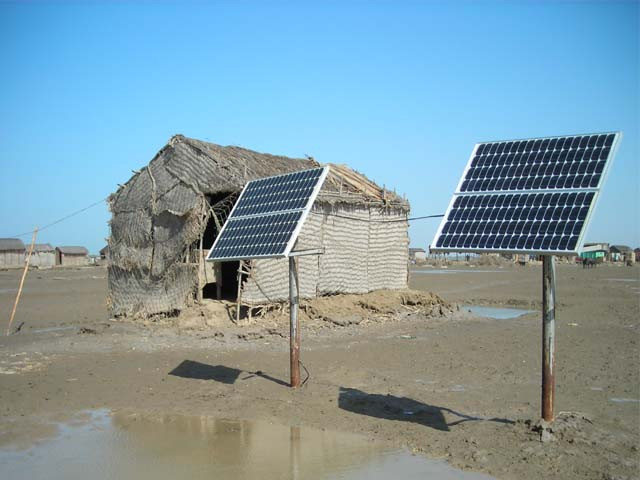Business
Jazz overcharges Rs6.58b: AGP | The Express Tribune

ISLAMABAD:
The Auditor General of Pakistan (AGP) has unearthed Rs6.58 billion in alleged overcharging by telecom operator Jazz from its customers and recommended a formal inquiry to determine responsibility. The audit has also urged implementation of Departmental Accounts Committee (DAC) directives and fixation of responsibility on those at fault.
Auditors revealed that the company had pocketed billions from consumers through various mobile packages beyond the tariff rates approved by the Pakistan Telecommunication Authority (PTA). According to Section 4(1)(m) of the Pakistan Telecommunication (Re-Organisation) Act, 1996 (amended up to 2014), the PTA is responsible for regulating competition in the sector and protecting consumer rights. Similarly, Regulation 10(1)(i) of the Telecom Consumer Protection Regulations, 2009, binds operators to ensure that no tariff is charged or advertisement launched without PTA approval, wherever required.
The PTA had approved tariffs for multiple Jazz packages during FY2023-24. However, the audit observed that the operator overcharged its customers beyond the approved rates. A comparative analysis of selected weekly and monthly packages confirmed that Jazz overcharged an amount of Rs6.58 billion during the financial year.
The audit concluded that charging customers above approved rates reflected weak regulatory oversight on the part of PTA. The matter was reported to the management and Principal Accounting Officer (PAO) in November 2024. In response, PTA argued that as a deregulated industry, it monitors competition and prevents predatory pricing by the Significant Market Power (SMP) operator, while leaving other operators to manage the Average Revenue Per User (ARPU). PTA maintained that ARPU in Pakistan is already among the lowest in the world.
The telecom regulator, through letters dated February 12, 2024, and August 12, 2024, granted approvals to Jazz for increasing package prices by up to 15% per quarter and decreasing incentives in any bundle by up to 5%, subject to prior intimation. These blanket permissions covered February-June 2024 and August-December 2024, respectively. Subsequently, Jazz increased its package rates through a letter dated November 12, 2024, under intimation to PTA.
The auditors, however, rejected the explanation as untenable, noting that granting blanket approvals for tariff hikes went against the spirit of the Consumer Protection Regulations. Audit officials retrieved information from various proposals submitted by Jazz to PTA during FY2023-24 and approvals granted by the Authority, which suggested excessive consumer burden beyond permissible limits.
The matter was later discussed in a DAC meeting held on December 26, 2024. The DAC directed PTA to provide a complete record of approved rate increases for various mobile packages to audit authorities for verification. However, PTA had not furnished the requisite record until the finalisation of the report.
The Competition Commission of Pakistan’s website states that the Commission implements the Competition Act 2010, which prohibits “the abuse of dominant position by one or more undertakings.” Section 3(i) specifically addresses “Exploitative abuses” that result in direct loss of consumer welfare, including “charging excessive prices.” However, a CCP spokesperson clarified that the issue did not fall within the Commission’s jurisdiction.
Meanwhile, Jazz strongly rejected the audit’s findings. A company spokesperson stated, “Jazz is a responsible corporate entity and has consistently operated in full compliance with Pakistan’s regulatory framework. All tariffs and services are launched only after formal approvals by PTA, in accordance with clearly defined processes.”
The spokesperson added that Jazz was reviewing the audit report’s observations regarding PTA for Audit Year 2024-25 and expressed confidence that the company had acted lawfully and transparently. “We remain confident that Jazz has acted in full alignment with PTA’s rules and regulatory procedures, including those related to tariff approvals and mandated contributions. We trust the matter will be reviewed in the context of regulatory facts, documented approvals, and institutional roles,” the statement said.
A formal comment from PTA was still awaited at the time this story was filed.
Business
Eli Lilly cuts cash prices of Zepbound weight loss drug vials on direct-to-consumer site

The Eli Lilly logo appears on the company’s office in San Diego, California, U.S., Nov. 21, 2025.
Mike Blake | Reuters
Eli Lilly on Monday said it is lowering the cash prices of single-dose vials of its blockbuster weight loss drug Zepbound on its direct-to-consumer platform, LillyDirect, building on efforts by the company and the Trump administration to make the medicine more accessible.
The announcement also comes weeks after chief rival Novo Nordisk unveiled additional discounts on the cash prices of its obesity and diabetes drugs.
Starting Monday, cash-paying patients with a valid prescription can get the starting dose of Zepbound vials for as low as $299 per month on LillyDirect, down from a previous price of $349 per month. They can also access the next dose, 5 milligrams, for $399 per month and all other doses for $449 per month, down from $499 per month across those sizes.
Zepbound carries a list price of roughly $1,086 per month. That price point, and spotty insurance coverage for weight loss drugs in the U.S., have been significant barriers to access for some patients.
Eli Lilly’s announcement comes just weeks after President Donald Trump inked deals with Eli Lilly and Novo Nordisk to make their GLP-1 drugs easier for Americans to get and afford. The agreements will cut the prices the government pays for the drugs, introduce Medicare coverage of obesity drugs for the first time for certain patients and offer discounted medicines on the government’s new direct-to-consumer website launching in January, TrumpRx.
But Eli Lilly’s deal with Trump centers around lowering the prices of a different form of Zepbound – a multi-dose pen – after it wins Food and Drug Administration approval.
That means Eli Lilly’s Monday announcement around cutting prices on the existing single-dose vials could allow more patients to get discounted treatments more quickly.
“We will keep working to provide more options — expanding choices for delivery devices and creating new pathways for access — so more people can get the medicines they need,” said Ilya Yuffa, president of Lilly USA and global customer capabilities, in a statement.
Eli Lilly’s stock, which has climbed more than 36% this year, fell nearly 2% on Monday. Its meteoric rise due to the success of Zepbound and its diabetes injection Mounjaro vaulted it to becoming the first health-care company to hit a $1 trillion market value last month. Though cutting prices means lower revenue per medication sold, Eli Lilly’s sales — and shares — have continued to soar through past pricing announcements as demand balloons.
With single-dose vials, patients need to use a syringe and needle to draw up the medicine and inject it into themselves. Eli Lilly first introduced that form of Zepbound in August 2024.
It’s unclear how many patients are currently using single-dose vials of Zepbound. But Eli Lilly previously said that direct-to-consumer sales now account for more than a third of new prescriptions of Zepbound.
Novo Nordisk earlier this month lowered the price of its obesity drug Wegovy and diabetes treatment Ozempic for existing cash-paying patients to $349 per month from $499 per month. That excludes the highest dose of Ozempic.
The company also launched a temporary introductory offer, which will allow new cash-paying patients to access the two lowest doses of Wegovy and Ozempic for $199 per month for the first two months of treatment.
Business
OBR chairman resigns over Budget leak

The chairman of the Office for Budget Responsibility (OBR) has resigned over the early publication of the watchdog’s forecasts.
Richard Hughes said he was resigning to allow the OBR to “quickly move on from this regrettable incident”.
His resignation follows publication of a report that described the leak as “the worst failure in the 15-year history of the OBR” and strongly criticised the watchdog’s processes for protecting sensitive information.
In a letter to the Chancellor and the chairwoman of the Commons Treasury Committee, Mr Hughes said he took “full responsibility” for “the shortcomings identified in the report”.
He said: “By implementing the recommendations in this report, I am certain the OBR can quickly regain and restore the confidence and esteem that it has earned through 15 years of rigorous, independent economic analysis.”
Mr Hughes has served as chairman of the OBR since 2020 and was reappointed to the job for a second five-year term in July this year.
Speaking in the Commons as the news of the resignation broke, Chief Secretary to the Treasury James Murray offered the Government’s thanks to Mr Hughes “for his dedication to public service”.
Later, the Chancellor herself offered her thanks for Mr Hughes’ “many years of public service”, adding: “This Government is committed to protecting the independence of the OBR and the integrity of our fiscal framework and institutions.”
Conservative leader Kemi Badenoch accused the Chancellor of using Mr Hughes as a “human shield” and called on Rachel Reeves to resign.
Liberal Democrat Treasury spokeswoman Daisy Cooper said Mr Hughes was “a dedicated public servant” who had “rightly taken responsibility for a failure on his watch”, adding the OBR needed to learn from its “catastrophic error”.
Treasury Committee chairwoman Dame Meg Hillier also thanked Mr Hughes, saying: “I commend his decision to take full responsibility for the incident and I wish him well for the future.”
The Treasury said it would begin the process of finding a replacement for Mr Hughes “in the coming weeks”.
The OBR launched an investigation after official forecasts were uploaded to the watchdog’s website, releasing details of the Budget almost an hour early.
In a report published on Monday, the OBR said the leak had been “seriously disruptive to the Chancellor, who had every right to expect that the (forecasts) would not be publicly available until she sat down at the end of her Budget speech”.
Noting Mr Hughes had already “rightly” apologised for the leak, the report said it was “not a case of intentional leakage” or a matter of pressing publish too early.
The OBR said it was caused by two errors linked to the WordPress publishing site it used.
The report into the incident said that, while it knew web addresses for its files follow a pattern, it assumed “the protections provided” by WordPress “would ensure it could not be accessed”.
But two configuration errors were the technical causes of the premature access.
The forecast for the last spring statement in March was also “accessed prematurely” on one occasion, the report noted, but concluded that no activity appeared to have been taken as a result and the most likely explanation is “benign”.
The report recommended a review of the watchdog’s processes for publishing such documents.
“To rebuild trust, the leadership of the OBR must take immediate steps to change completely the publication arrangements for the two important and time-sensitive documents containing the results of its biannual forecasts that it publishes in a normal year, and review arrangements for all other publications,” the report said.
One option would be for the watchdog to use the Government’s digital architecture but publish when it wants.
Another would be to have the Treasury publish the forecasts for the Budget and spring statement, but this would only work if safeguards for “real and perceived independence” could be put in place.
There may need to be an interim solution, the report noted, but said new arrangements must be in place in time for the next statement in spring 2026.
Business
OGRA Announces LPG Price Increase for December – SUCH TV

The Oil and Gas Regulatory Authority (OGRA) has approved a fresh increase in the price of liquefied petroleum gas (LPG), raising the cost for both domestic consumers and commercial users.
According to the notification issued, the LPG price has been increased by Rs7.39 per kilogram, setting the new rate at Rs209 per kg for December. As a result, the price of a domestic LPG cylinder has risen by Rs87.21, bringing the new price to Rs2,466.10.
In November, the price of LPG stood at Rs201 per kg, while the domestic cylinder was priced at Rs2,378.89.
The latest price hike is expected to put additional pressure on households already grappling with rising living costs nationwide.
-

 Sports1 week ago
Sports1 week agoWATCH: Ronaldo scores spectacular bicycle kick
-

 Entertainment1 week ago
Entertainment1 week agoWelcome to Derry’ episode 5 delivers shocking twist
-

 Politics1 week ago
Politics1 week agoWashington and Kyiv Stress Any Peace Deal Must Fully Respect Ukraine’s Sovereignty
-

 Business1 week ago
Business1 week agoKey economic data and trends that will shape Rachel Reeves’ Budget
-

 Politics1 week ago
Politics1 week ago53,000 Sikhs vote in Ottawa Khalistan Referendum amid Carney-Modi trade talks scrutiny
-

 Tech6 days ago
Tech6 days agoWake Up—the Best Black Friday Mattress Sales Are Here
-

 Tech1 day ago
Tech1 day agoGet Your Steps In From Your Home Office With This Walking Pad—On Sale This Week
-

 Fashion1 week ago
Fashion1 week agoCanada’s Lululemon unveils team Canada kit for Milano Cortina 2026





1729471601-0/image-(8)1729471601-0-640x480.webp)



